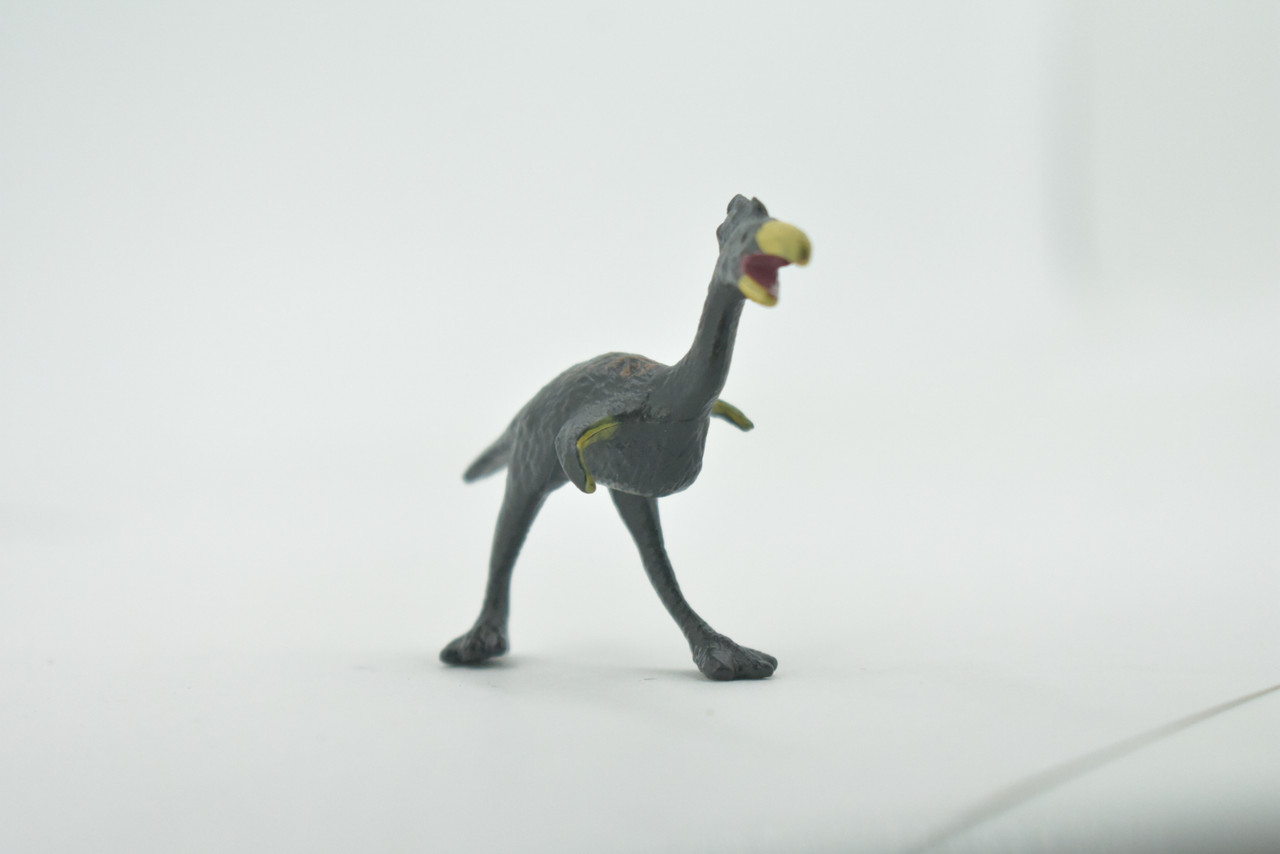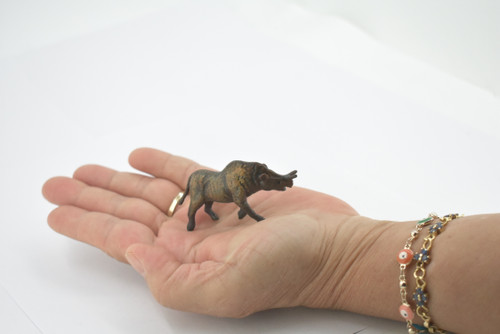Product Description
This Dinornithidae, Moa, 2" figure includes hand painted features to give it realistic details that are true to natural anatomy. This figure is considered a museum quality replica. Highest Quality Natural Rubber.
Moas belong to the group of large, flightless birds known as ratites. Ratites have a distinctive palate, and a sternum (breastbone) with no keel, so there is no anchor for the strong musculature needed for powered flight. The origin of these birds has recently been clarified by the discovery of numerous good fossils in North America and Europe. Ratites were once thought to have a southern origin in the ancient continent of Gondwana, but new fossil evidence shows that flying ratites inhabited the Northern Hemisphere in the Paleocene and Eocene, 40–70 million years ago. The present Southern Hemisphere distribution of ratites probably resulted from the spread of flying ancestors of the group from the north. The earliest remains of moas in New Zealand are from the Upper Pliocene, about 1.5 million years ago. By then they were recognizably moas, but it is thought that the two subfamilies—the tall, graceful Dinornithinae and the short, stout-bodied Anomalopteryginae—may be descended from two different flying ratites that invaded New Zealand during the Tertiary. Many different classifications have been proposed for moas; some authors list as many as 27 species, others only 10. The lower figure is adopted here, following a detailed review by Atholl Anderson, because many earlier classifications depended on small differences in subfossil bone size and shape that could be due to sexual dimorphism or age differences. There are no accounts of living moas. All information is derived from subfossil material recovered from swamps, caves, and river beds. Moas were very large, flightless birds with long necks and long legs. Unlike surviving large ratites, the tibial bone of moa legs was longer than the tarsus, and they moved slowly. Except for bats, no mammals inhabited New Zealand, so moas had no predators before the Polynesia ns arrived and no need to flee swiftly. The height of the birds (to the back) was 3–12 ft (0.9–3.7 m) and they weighed 48–506 lb (22–230 kg). The three Dinornis species and Pachyornis elephantopus were the largest, weighing 257–506 lb (117–230 kg). Surviving feather and skin fragments indicate that, apart from the legs, the birds were fully feathered, although they had no visible wings. Each feather was double, with a well-developed aftershaft, and was brownish, sometimes with pale edging.
Thanks for visiting Collectible Wildlife Gifts, the leading provider of high-quality, lifelike animal Designs and gifts! We work hard to ensure we have a diverse range of products. Each product is inspected for their quality craftsmanship. Whether you're searching for a great gift or seeking educational designs for displays, we’ve got you covered.
At Collectible Wildlife Gifts, our products appeal to a wide range of customers, including family, friends, and educators. Our products are trusted and used by professional organizations as well including aquariums, zoos, and movie studios.
Our extensive line of products boasts everything from plush sharks to educational animal growth cycles. Our products bring joy to recipients, and serve as valuable educational resources, sparking curiosity and fostering learning.
Discover the wonders of the natural world with Collectible Wildlife Gifts. Browse our collection today!































